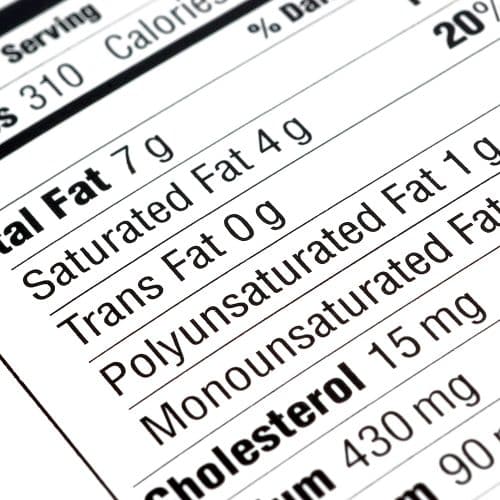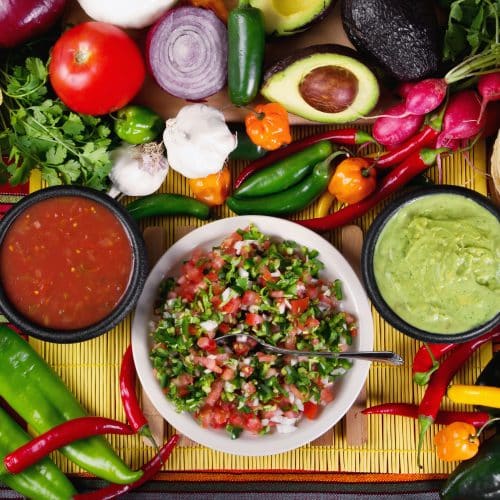
The headlines proclaim “Fat Is Back on U.S. Tables,” “Fat is Back: Vilified Nutrient Gets Reprieve” and “Fat Is Back and Diet Food Is Out!” So does that mean endless amounts of fried chicken, cream gravy and cheese fries are back on the menu? Whoa! Let’s take a closer look at the seeming flip-flop from “fat is bad” to “fat is good” and just what it means for the foods we eat.
A Look Back at Fat Advice
How did the low-fat frenzy get started? According to an article in the Journal of the History of Medicine and Allied Sciences, it all began with research in the 1940s that found an association between high-fat diets and high blood cholesterol levels, a risk factor for heart disease. By the 1960s low-fat eating was advised for not only lowering heart disease risk but also helping shed extra pounds. And in the 1980s low-fat diets became the standard in nutrition guidelines from leading health organizations. Folks were encouraged to limit fried foods, consume low and non-fat dairy, leaner cuts of meat and more fish and skinless chicken. To help provide consumers with options to meet the nutrition guidelines, the food industry developed an array of low-fat and fat-free products from cookies to chips to ice cream. Fat was trimmed off of meat cuts and fish was packed in water instead of oil. Consumption of nuts and fatty vegetables like avocados was not encouraged. Unfortunately, there was not clear evidence that the low-fat approach prevented heart disease or promoted weight loss. Remarkably, from 1970 to 2010 when low-fat was the accepted norm, the average American’s caloric intake actually went up by about 500 calories a day. People were eating more of everything, but a whopping 50 percent of those additional calories came from added fat. So it’s no surprise that overweight and obesity rates began to rise.
The Current Fat Science
So, what prompted this recent change of heart on the fat issue? New research over the past decade has questioned the wisdom of the low-fat diet and recommendations from public health and healthcare organizations have followed suit. The 2015 – 2020 Dietary Guidelines For Americans advise consuming less than 10 percent of daily calories from saturated fats, focusing on the type of fat rather than the total amount. They emphasize using unsaturated vegetable oils along with nuts and vegetables naturally high in monounsaturated fat like olives and avocado because they help lower blood cholesterol and are the major source of essential fatty acids and vitamin E in our diets. In addition, a July 2017 American Heart Association (AHA) Advisory had similar recommendations. AHA advised replacing saturated fat with polyunsaturated and monounsaturated fat but did not set a limit on total fat intake or suggest reducing intake.
Translating Advice to the Plate
So what does this all mean for the typical person trying to prepare or order healthy meals? Moderation is the key.
- Replace foods with saturated fat like fatty cuts of meat and poultry skin, butter, cream and tropical oils with healthy fats like unsaturated oils (canola, corn, olive, peanut, safflower, soybean, and sunflower), nuts, olives and avocado.
- Watch serving sizes. Keep in mind that a tablespoon of oil boasts 120 calories, a 1/4 cup of almonds 160 calories, and a half an avocado 120 calories.
- Eat a variety of foods and use the USDA MyPlate as a guide, taking care not to overeat on any particular food or beverage to keep calories and weight under control and get all the nutrients your body needs.
- Substitute a low-calorie sweetener like sucralose for sweetening beverages and foods to save calories. Eating a light yogurt vs. one sweetened with sugar saves 100 calories/6-oz. serving and drinking a 12-ounce can of diet soda instead of a regular one cuts out 150 calories. And unlike sugar, low-calorie sweeteners don’t raise blood sugar levels so they are a great choice for those with diabetes.
To put this advice into action, try these recipes that combine healthy fats with a low-calorie sweetener: Sweet & Sour Chicken, Rosemary Balsamic Roasted Vegetables, and No-Fuss Bread Pudding.
 Neva Cochran, MS, RDN, LD is a registered dietitian nutritionist based in Dallas. She serves as a nutrition communications consultant to a variety of food and nutrition organizations, including the Calorie Control Council. She is passionate about promoting fact-based food and nutrition information to help people enjoy nutritious eating. Follow her on Twitter @NevaRDLD and check out her blog at www.NevaCochranRD.com.
Neva Cochran, MS, RDN, LD is a registered dietitian nutritionist based in Dallas. She serves as a nutrition communications consultant to a variety of food and nutrition organizations, including the Calorie Control Council. She is passionate about promoting fact-based food and nutrition information to help people enjoy nutritious eating. Follow her on Twitter @NevaRDLD and check out her blog at www.NevaCochranRD.com.




